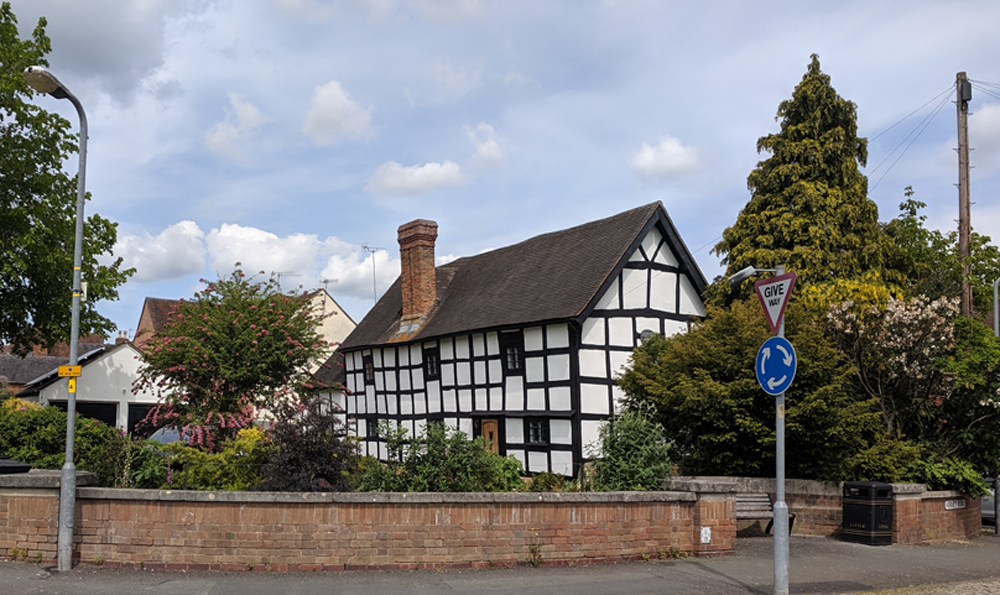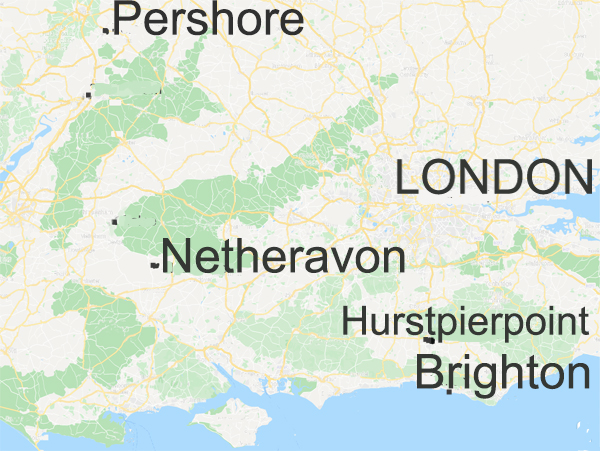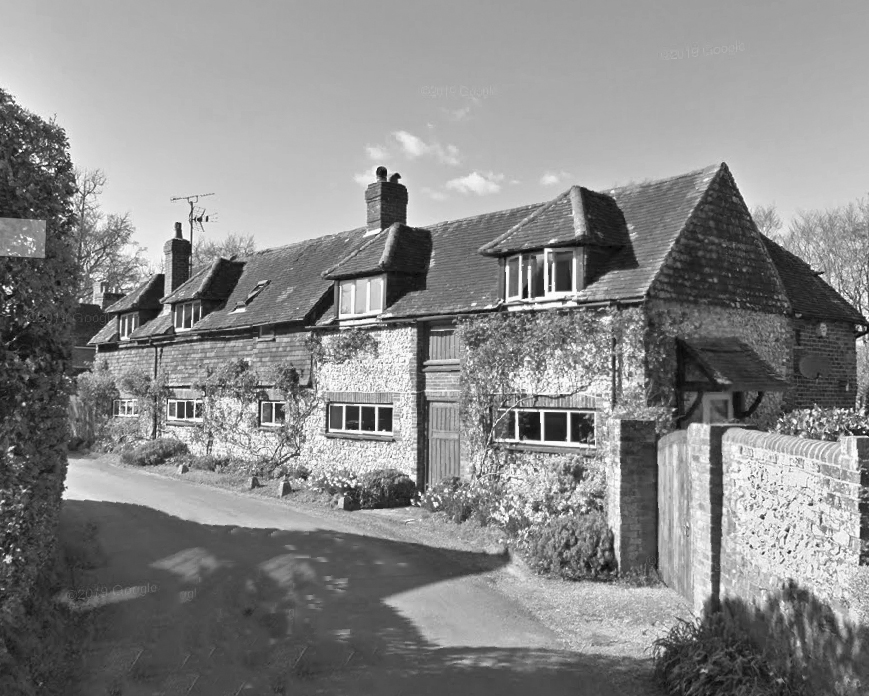
James Brown (1813-1879)
Line of Descent
to
Helen Glenmire Davidson
=============
James Brown
![]()
Hannah Brown
(m. William Martin, 1890)
![]()
Isabella Jane Martin
(m. James ("Harry") Davidson, 1918 )
return to the Davidson Family Tree

The only known photograph of James, taken probably around 1870. It's been suggested that the top hat and garden scene were props from a photographic studio.
Death:
19 April, 1879 Church Road, Keymer, Sussex
2 June, 1912, Keymer, Sussex
Tracing the early history of James Brown has proved a little difficult .... In all the records so far found, James gives his birthplace as Pershore, Worcestershire, c1813, but no baptisms for a James Brown can be found in the registers for around the right time. The family tale for James hints at a scandal of some sort - that due to a family dispute, he changed his name from 'Bell' to 'Brown', but no record under that name can be found at Pershore or nearby either....
Pershore has a striking Anglo-Saxon abbey church, now the Anglican parish Church of the Holy Cross. The church that's there today is all that remains of a magnificent structure destroyed in 1539 as a result of the Protestant Reformation. Centuries later, it is still imposing, although it has had a more modern support structure built on one side

The Abbey Church of the Holy Cross, Pershore

One of the intriguing historic houses in Pershore, this from the early 16th century, now a private residence
We are so far (Dec 2019) unable to find a marriage record for James and Mary Ann Staples from Netheravon in Wiltshire... The name "James Brown" was not an uncommon one at the time, and similiarly, Mary Ann as a given name was equally popular. However, by 1850 the couple were living together in Sussex, where they started their family with the birth of their first child, Jane, in 1950 at Hurstpierpoint, just north of Brighton.
 James was a labourer all
his working life. In the two censuses which have survived in
and which James and his family are recorded, he is described as
either a labourer, or a "labourer on the roads", while his
death certificate says "farm labourer". He was probably a
jack-of-all- trades - on one of Mary's documents, he was
described as a gardener, and in another document (the marriage
certificate of his daughter Jane in 1877), he is recorded as a
"toy dealer", an occupation which was also noted for Mary Ann a
short time later in the 1881 census
James was a labourer all
his working life. In the two censuses which have survived in
and which James and his family are recorded, he is described as
either a labourer, or a "labourer on the roads", while his
death certificate says "farm labourer". He was probably a
jack-of-all- trades - on one of Mary's documents, he was
described as a gardener, and in another document (the marriage
certificate of his daughter Jane in 1877), he is recorded as a
"toy dealer", an occupation which was also noted for Mary Ann a
short time later in the 1881 census
James and his family lived in various villages and hamlets in Sussex, a fair distance away from James' birthplace of Pershore. Travelling Worcestershire or Netheravon in Wiltshire (Mary Ann's home town) to Sussex would not have been easy and, since Mary Ann was a servant girl and James a farm labourer, it was probably not undertaken in any degree of comfort
In Sussex, their lodgings would almost certainly have been conditional on their working arrangements. The Brown family moved around over the years, but always close to Hurstpierpoint and the larger town of East Grinstead. They had six children, but probably only five survived childhood. Their fourth daughter Sarah, born in 1859, is not mentioned in any further records, not even the 1861 census when three of their children, including a young baby Joseph, is listed as being present on the night the census was taken - and Sarah, had she survived, would have been considerably less than two years old at that time. However, no record of a death has been found either...
Of their six children, only one, a son Joseph, was given the distinction of having a second name, William - all the girls had to make do with only a single Christian name.

Work for James was probably mainly on the
farms around Hurstpierpoint or East Grinstead - the births of the
youngest four children were registered in the tiny village of
Clayton, which, in the 21st century is really nothing more than a
hamlet; but it also has a church of some note, dating back to the
Domesday Book.
right: Clayton village houses
Just a few kilometres away from Clayton is Keymer, which also has records going back to the Domesday era. Keymer is where James lived for the last part of his life before he died from a long term "general debility", and an eight-day bout of bronchitis. From the address on his death certificate, Church Road, Keymer, it seems that he was living in one of the charity houses associated with the local church - but that street no long exists (at least under that name) in Keymer.
back to the Davidson family tree